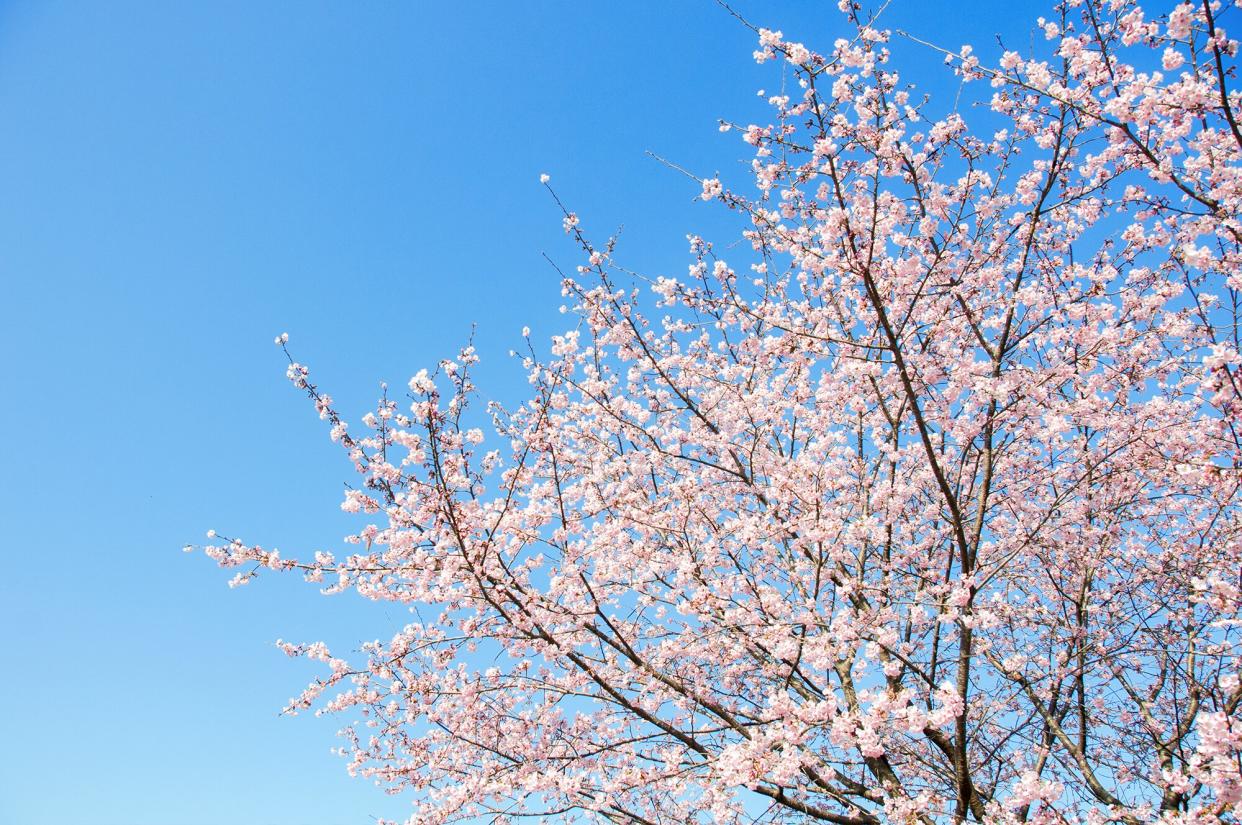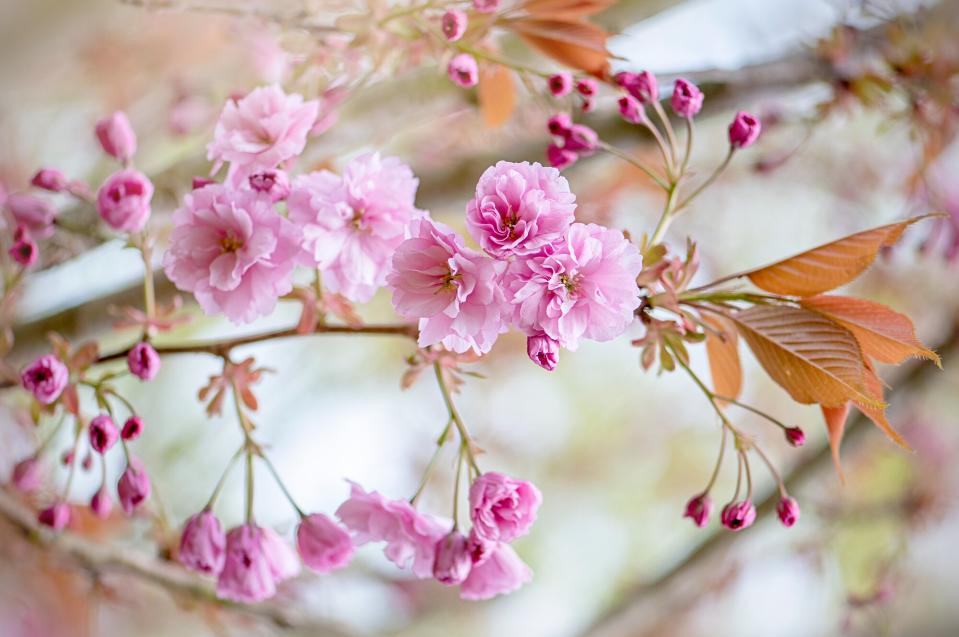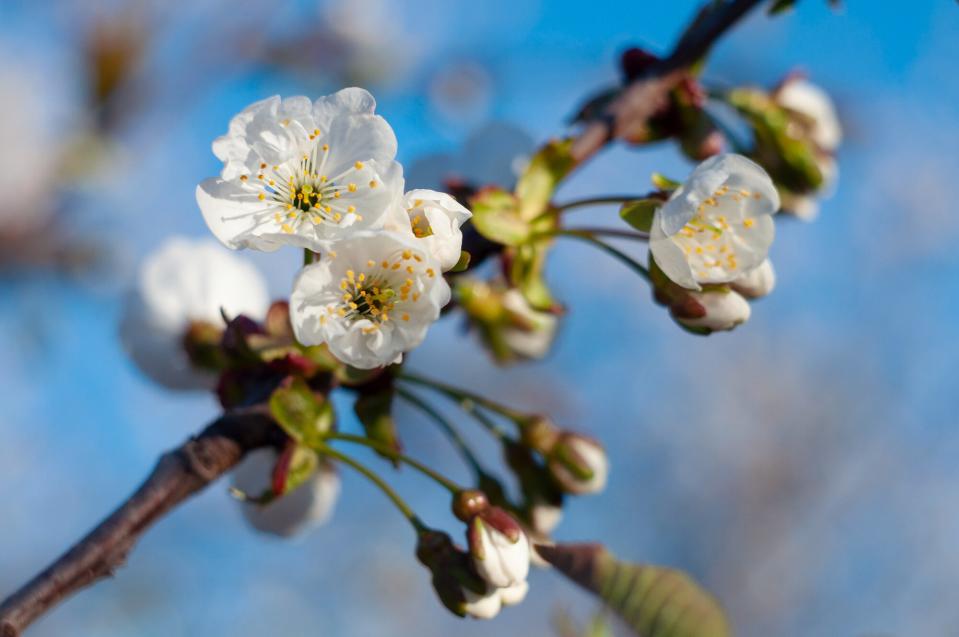How to Grow and Care for Flowering Cherry Trees—Plus, the Prettiest Varieties to Plant in Your Yard

inoc / Getty Images
Flowering cherry trees are some of the common tree species you'll find in the United States. The ones that put on a show everywhere from Seattle to Boston, are cultivars of popular Southeast Asian natives, which were crossed together hundreds of years ago. "Japan famously gifted [some] to Washington, D.C., in the early 1900s," says Blake Watkins, the Operations Partner at Monster Tree Service. Since these show-stopping beauties, which break into blossom at the start of spring, are such a joy to behold, you're likely wondering how to introduce them to your own yard. Here, Watkins explains how to grow and care for this tree type, which blooms all across the United States.
Related: How to Cut Cherry Tree Branches So They Will Bloom Indoors
How to Plant a Cherry Tree
Flowering cultivars are grafted, says Watkins, and their root stocks can be large and aggressive despite the tree's small stature. This is why it is important to "use caution when planting near hardscapes," like a driveway or sidewalk, he explains; cherry trees' root systems can compromise their integrity. He suggests triple-checking the planting directions for your specific tree, since each variety has its own special needs—but as a general rule of thumb, they should be planted 20 to 40 feet apart in a hole that is as deep as the root ball and twice as wide.
How to Care for Cherry Trees
According to Watkins, flowering cherry trees perform best in full sun and well-draining soils. "They need water during establishment and supplemental irrigation during hot and dry months," he says, noting that you should regularly offer them a tree-specific fertilizer to encourage healthy growth.
How to Treat and Prune Cherry Trees
Unlike some other tree types, cherry trees are not a "set it and forget it" option, notes Watkins. "Many types of cherries are susceptible to fungal infection," he explains, adding that you should have a certified arborist come to your property to inspect your trees for disease approximately every three years. They will also need a good trim around the time they're inspected—something you should leave to a professional as well, says Watkins.
Cherry Tree Varieties to Plant at Home

gyro / Getty Images
Yoshino
Watkins notes that one of the most common types of cherry tree you'll see across the country is actually a hybrid. "Cultivars of the Yoshino (Prunus x yeodoensis) are the most popular and have small, simple flowers with five to seven petals," he explains. "Cultivars of this hybrid range in color from white to pink." You've probably noticed some of these varieties burst into blossom in early spring—they are some of the first cherry tree iterations to put on a colorful show each season.

Jacky Parker Photography / Getty Images
Kanzan
Another popular cherry tree is the 'Kanzan' (Prunus 'Kanzan'), which is also a cultivar. You can identify this variety, says Watkins, thanks to its double flowers that form in impressive clusters; they feature between 20 and 50 petals.

np-e07 / Getty Images
Bing and Lapins
Unlike their flowering-only counterparts, both Bing (Prunus avium 'Bing') and Lapins (Prunus avium 'Lapins') trees will actually produce blossoms and fruit. Both are popular home landscaping varieties and some of the more common options you'll see in yards and garden centers alike. "They are native across Europe and have been cultivated [to bear fruit]," Watkins says. "They require skilled pruning to maximize fruit production. Buy yours from a local nursery to ensure the cultivar will thrive in your hardiness zone."

Ingrid Heckel / EyeEm via Getty Images
Carolina Cherry Laurel
The Carolina Cherry Laurel (Prunus caroliniana) is native to the southeast, but has been cultivated widely across the country, according to Watkins. You'll recognize it by its small white flowers in the spring, which are then followed by small cherries. Unlike Bing trees, you'll want to leave these fruits untouched; they are tart and are better enjoyed by birds and wildlife. As for where to plant this type of cherry tree in your yard? "It is a durable evergreen tree, and is often used for screening and hedges," Watkins notes.

